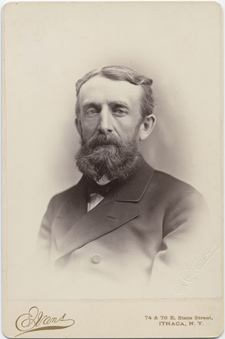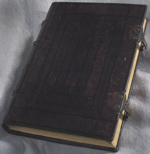Founding Collections
Andrew Dickson White

Andrew Dickson White, ca. 1885
Cornell University’s first President, Andrew Dickson White, was the Library’s founding collector. His legacy endures today, providing the foundation upon which Cornell’s rare book collection rests. White began acquiring books during his undergraduate years and continued to do so until his death in 1918 at the age of eighty-five. White’s personal collection of more than 30,000 volumes was his gift to the University he helped create. The collections he built on the French Revolution, the Reformation, witchcraft, architecture, the American Civil War, slavery, abolitionism and the history of science stand today among the best in the world on those subjects.
White viewed excellent libraries as essential to the quality of universities and to the teaching of history. He also firmly believed that instruction in history should incorporate the use of original sources—rare books, manuscripts and other documents—as key components of scholarship and learning. White’s principles continue to provide the motivating force behind Cornell’s rare book and manuscript collections today. His collections have grown over the past century to enrich the experiences of generations of students and scholars.
This exhibition is dedicated to Andrew Dickson White and to all the collectors and Library friends who have followed in his footsteps, building the collections and enhancing the educational experience for the benefit of scholars past, present and future.
 |
Nicholas Copernicus. De Revolutionibus Orbium Coelestium, 1543 [zoom] | View other images: 1 Copernicus introduced the “modern” concept of a heliocentric—as opposed to the traditional geocentric—universe. This is Andrew Dickson White’s personal copy, which he inscribed on the flyleaf: “From this dates modern astronomy and a vast change in the theological and scientific view of the universe.” Gift of Andrew Dickson White |
| View a photo of this exhibition case | |